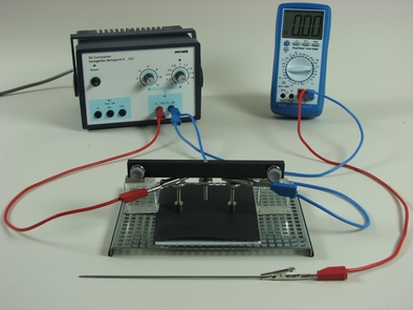setTimeout(function(){
window.print();
},500)

Technical data Inhomogeneous electric fields (dipole fields)Article no: P6005200  Principle Investigate the electric field, which is created by applying a voltage to two circular electrodes. Benefits
Tasks Determine the equipotential lines of the electric field between the two electrodes and derive the electric field pattern. Learning objectives With this experiment the students will investigate the electric field between two circular electrodes. This field corresponds to the attractive field between two point charges. It also referred to as a static dipole field and serves as an example of an inhomogeneous field. Scope of delivery
| |||||||||||||||||||||||||||||||||
PHYWE Systeme GmbH & Co. KG
Robert-Bosch-Breite 10 – 37079 Göttingen – Germany
www.phywe.com
Robert-Bosch-Breite 10 – 37079 Göttingen – Germany
www.phywe.com

